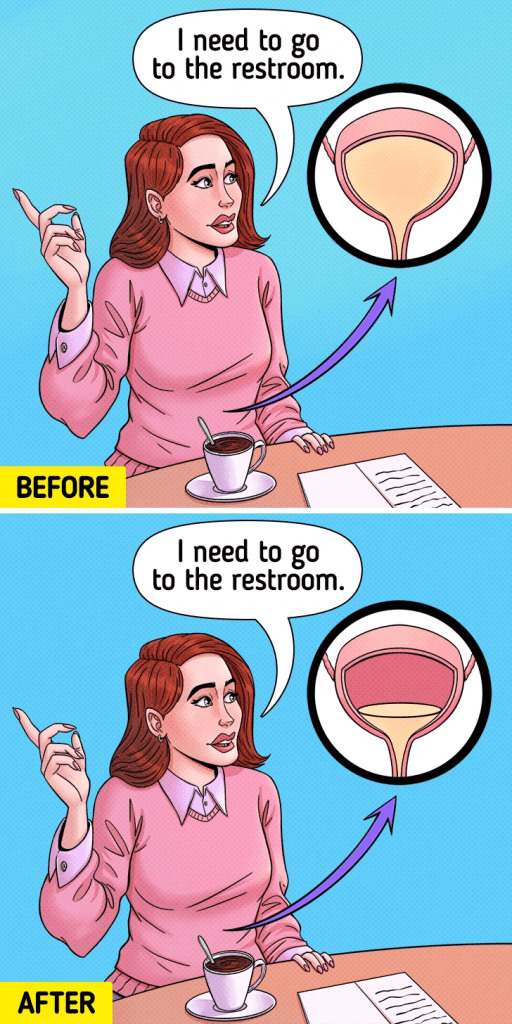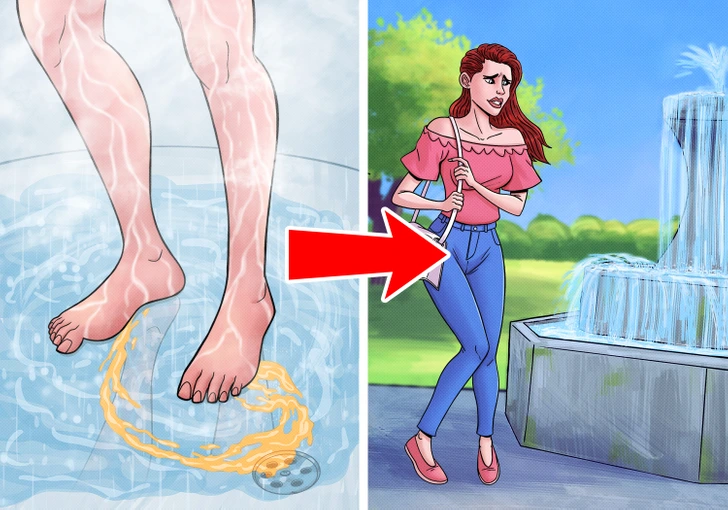Your bathroom routine might seem like a no-brainer, but some of your everyday habits could be doing more harm than good. From the way you pee to the positions you sit in, these seemingly minor habits can lead to bigger issues over time. Let’s dive into the top bathroom habits that need to change to ensure better health and a happier bladder!
1. Stop Peeing “Just in Case”

It’s common to pee “just in case” before leaving the house, even when you don’t feel the urge. This habit might seem harmless—after all, who wants to risk an unexpected bathroom emergency? But the truth is, this routine can actually do more harm than good.
- Why It’s Bad: Your bladder gets used to being emptied before it’s full, which trains it to send signals to pee more frequently. Over time, you might feel the urge to pee even when your bladder isn’t really full.
- What You Should Do Instead: Wait until you truly feel the need to go. If you’re embarking on a long trip or planning a strenuous workout, peeing beforehand is reasonable. But try to limit it to those situations to avoid developing an overactive bladder.
2. Don’t Push to Pee
When you’re in a hurry, it’s tempting to push to speed up the process. You might think this will help you empty your bladder faster, but in reality, it can weaken your pelvic floor muscles over time.
- The Consequences of Pushing: Pushing while peeing adds unnecessary pressure on your pelvic floor, weakening the muscles that support your bladder and other organs. This can lead to incontinence or pelvic organ prolapse.
- The Right Way to Pee: Sit comfortably on the toilet, relax, and let gravity do its job. Be patient and allow your bladder to empty at its own pace. Your pelvic muscles will thank you later.
3. Sitting Incorrectly on the Toilet
How you sit on the toilet can affect how well your body functions. You may think any sitting position works, but posture matters—even in the bathroom.
- Common Mistake: Hovering over the toilet seat, especially in public bathrooms, can cause tension in your pelvic muscles. Sitting with only your toes touching the ground can also make it harder to pee or poop.
- Optimal Toilet Position: Ensure your feet are flat on the ground. Use a small stool if needed to raise your knees above your hips, which helps align your body better. Lean forward slightly to bring your knees and shoulders closer together. This position is not only more comfortable but also helps with a smoother release.
4. Don’t Limit Water to Avoid Peeing
Some people cut back on water to avoid frequent bathroom trips, especially when they’re on the go or have a busy schedule. While it might seem practical, this habit can actually backfire.
- The Problem with Dehydration: Limiting your water intake can lead to concentrated urine, which can irritate the bladder and increase the urge to pee. Dehydration can also contribute to other health issues like kidney stones and urinary tract infections (UTIs).
- Adjust Your Drinking Habits: Instead of gulping large amounts of water all at once, try sipping throughout the day. This helps your bladder handle the liquid better and reduces sudden urges. Also, be mindful of bladder irritants like caffeine, alcohol, and spicy foods, which can contribute to frequent urination.
5. Rethink Peeing in the Shower

Peeing in the shower might seem convenient, or even eco-friendly. After all, it saves water and time, right? However, this habit can actually create an unwanted association in your brain.
- The Psychological Link: When you pee in the shower, your brain starts to associate the sound of running water with the need to urinate. This can cause you to feel the urge to pee whenever you hear water running, even if your bladder isn’t full.
- Break the Habit: To avoid forming this connection, make it a rule to only use the toilet for peeing. By maintaining clear boundaries, you can keep your bladder signals aligned with actual needs.
Why Breaking These Habits Matters
You might wonder why such small adjustments in your bathroom routine are worth the effort. But over time, these seemingly minor habits can contribute to larger health issues like urinary incontinence, UTIs, and weakened pelvic muscles. By correcting these habits now, you’ll promote better bladder health, improve pelvic function, and reduce the risk of long-term complications.
Conclusion: Better Bathroom Habits, Better Health
While these bathroom habits might seem harmless at first, they can add up to serious problems over time. Whether it’s peeing “just in case,” pushing too hard, sitting improperly, cutting back on water, or peeing in the shower, it’s time to rethink your routine. By making these simple changes, you’ll not only improve your bladder health but also feel more comfortable and confident throughout the day.
So, are you ready to break these habits? Remember, it’s never too late to start taking better care of yourself—even in the bathroom!


